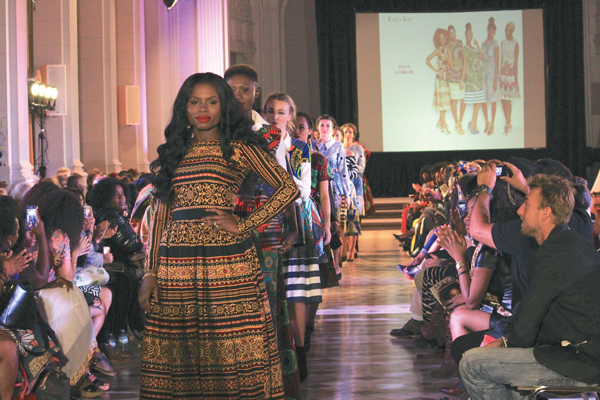Second annual event celebrates African print and style
Photo: Tabetha Sheppard
On the evening of Oct. 3, the halls of Tabaret were buzzing with excitement. As fashionistas from all over the Capital filled up the Tabaret Hall ballroom, the sounds of drums drew everyone’s eyes to the stage and the Safara Fashion Show began.
The fashion show celebrates African print and style, with outfits created by a team of fashion lovers who are all of African descent. One of the show’s creators, and one of this year’s co-hosts, was Gwen Madiba, a University of Ottawa alumna who majored in communications and sociology.
Prior to Safara, Madiba had been involved with other fashion shows in Ottawa. Safara, which is the first of it’s kind in the area, came from Madiba and her team’s love for different African cultures.
“We really wanted to bring all nations together to maybe make some people discover a culture, but also make people embrace our culture,” said Madiba.
Madiba was not the only member of the U of O community involved with the event. The Student Federation of the University of Ottawa (SFUO), as well as many clubs on campus, including the Safara Afro Club, helped with the show’s organization. A few of the designers featured in the show were also U of O students.
The ballroom was packed with over 300 people for the second year of the show, which was co-hosted by American model and actress Karrueche Tran. The usher rushed in extra chairs at the last minute as the show kicked off with a group of African drummers.
The headlining label at the event was Kaela-Kay Collections by Ghanaian designer Catherine Addai, who showcased a number of her vibrant African print dresses. After the headliner was the We Are Kings menswear collection, which was designed by U of O international student King Hector Jr. The collection was full of standout suits and blazers, with floral designs that kept the audience captivated.
The event featured many different designers, who showed everything from African jewellery to handbags, and even a hair show which was done by Curly Hair Designs, a Nepean-based hair salon. The show also featured models of varying ages, many of whom were amateurs.
“What’s different about this show is that we have people of different shapes, different sizes, different races coming together in respect and love,” said Madiba.
The hosts even encouraged audience members who were wearing African print to walk the runway and show off their unique style.
There was also a competition in which three young designers showcased their designs for a $1,000 prize, and the winner was chosen by who got the loudest cheers from the audience.
After the loss of Ottawa Fashion Week in 2014, Ottawa only has a few major fashion shows left, including Runway for Hope and Grande Première Ottawa. But if Safara continues to draw huge crowds, it could join the rankings as one of Ottawa’s biggest shows.
For Madiba, Safara is more than a fashion show, but also somewhere where talented people can come together to encourage one another and build up each other’s self-confidence.
“We work also on each other’s self-esteem and every time, before every practice, we have a pep talk with all of the models to push each other, to better ourselves and to better accept ourselves and so it’s more than a fashion show, it’s a journey, it’s a beautiful journey.”





